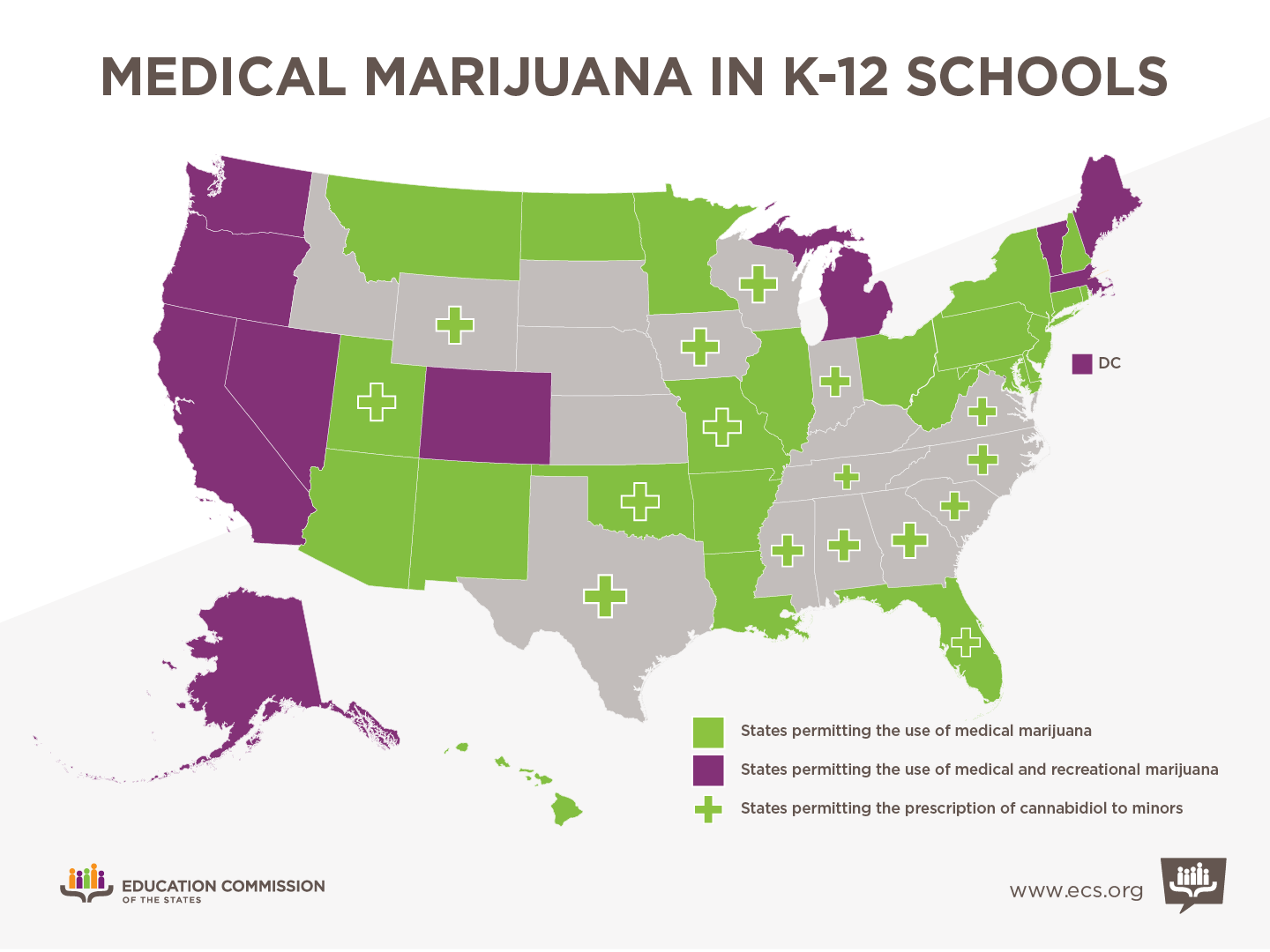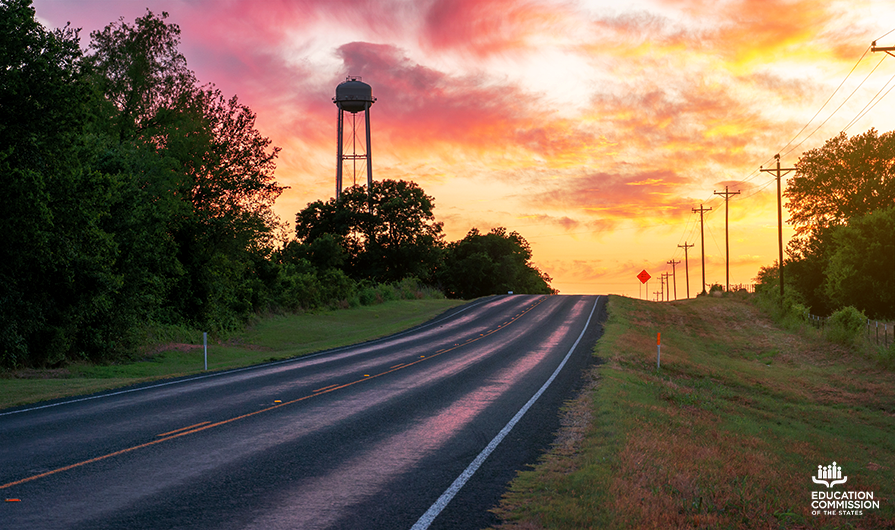States have historically prohibited the use or possession of marijuana on school grounds, but with the arrival of medical marijuana, policymakers have begun to explore the intersection between school drug policies and medical marijuana laws.
 Thirty-three states plus the District of Columbia allow the use of medical marijuana, according to the National Conference of State Legislatures. Of these, 17 states permit the prescription of cannabidiol to minors.
Thirty-three states plus the District of Columbia allow the use of medical marijuana, according to the National Conference of State Legislatures. Of these, 17 states permit the prescription of cannabidiol to minors.
Last year, the issue of student access came to the forefront in Illinois, where a student was not permitted to consume legally prescribed low-THC cannabidiol on school grounds. In response to a lawsuit, the Illinois legislature passed H.B. 4870, allowing students to consume non-smokable medical marijuana on school grounds.
The Illinois legislation is similar to state laws in Colorado, Maine and New Jersey. In these states:
- Students using medical marijuana products must have a valid medical recommendation.
- Only non-smokable marijuana products may be administered on school grounds.
- Only parents, legal guardians or primary caregivers may administer the substance.
- Students cannot be punished for marijuana use on school grounds.
Florida and Washington have taken a slightly different approach, leaving the details to districts. Florida permits consumption on school grounds but requires districts to implement rules governing consumption. While Washington allows consumption on school grounds, it is up to the school district to allow a student to consume on school grounds.
Safety Concerns for Schools
Some states that have legalized recreational marijuana have released guidance for parents on how to prevent underage use of marijuana. For example, the Oregon Health Authority Public Health Division’s guidance document includes information on how marijuana use can affect youths’ health, the different types of marijuana products and strategies for talking with kids about marijuana.
In Colorado, the department of public safety has a resource center with many guidance documents, fact sheets and studies on youth marijuana use prevention. Additionally, in 2015, Colorado passed legislation, H.B. 1273, adding the unlawful use, possession or sale of marijuana on school property to the list of items that must be included in each school’s annual written report to the state board of education.
We frequently receive questions from policymakers about marijuana in K-12 schools. A full response, including additional information on state policy, can be found here. If you have a question about medical marijuana or other education policy topics, please contact us.










